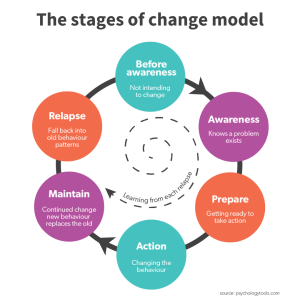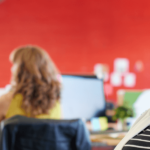
Why you’re feeling so stuck right now (and how to move through it)
Why you’re feeling so stuck right now (and how to move through it)
- What is languishing
- Signs and symptoms
- Why might someone be feeling this?
- Why are people talking about this now?
- Tips for moving through it
- When and where to get help
What is languishing?
It’s this ‘life in limbo’ space. You’re not feeling good, but you’re not necessarily feeling bad, either. Everything feels a bit flat and mundane like it’s Groundhog Day.
Frozen, heavy and stuck are all words that describe the feeling of languishing.
When we’re languishing, we’re living in survival mode. It can be hard to turn on the thinking brain and assess where you are and act. We’re surviving, not thriving.
Most of us have felt this way at some point and it can power us into action. But it can also become a problem if we’re in it too long.
Signs and symptoms
Unlike mental health conditions, languishing is not a clinical diagnosis. And you don’t have to have a mental health condition to be languishing. There are some common signs, but not a definitive list of symptoms. Each individual experiences it differently.
Think about what your ‘normal’ is, and how you feel compared to that. Check in with how your body and mind feels. Do you feel heavy and slow? Are your shoulders hunching, your body stiff? Are you feeling unmotivated, unfocused or indifferent about the future?
Notice the emotional signs and your thought processes. It’s not necessarily a feeling of hopelessness, but more that you’re not bothered one way or another. It’s getting complacent with your thoughts and choices and values, letting things that you would normally care about slide. As humans we’re supposed to have preferences, values and opinions. When someone is flourishing it’s easier for them to know and highlight these. When those things aren’t there, or we’re lax with them, then it’s a sign of languishing.
Other signs could be feedback from your environment. Are people around you noticing changes in you? Perhaps they feel you’re not your usual self? Tune in to what others are saying, and ask the people you trust what they think.
Why might someone be feeling this?
In psychology we talk about our window of tolerance. When you’re in your window of tolerance, your nervous system is regulated. You’re kicking goals, out doing the things you want to do. Things feel just right, and you can cope with life’s ups and downs.
When we experience stress and trauma, our window of tolerance shrinks. This means it can be harder to stay calm and focused. You don’t necessarily feel out of control, but you also don’t feel comfortable.
Being on the edges of your window of tolerance can result in languishing. There may not be the red flags you’d see if you were clinically anxious or depressed, but there’s enough going on that we’re not being effective.

Why are people talking about this now?
This topic is getting attention in 2021 because so many of us have been affected in some way by COVID-19. Living in a pandemic and lockdowns has understandably brought stress and trauma to many people. It’s stalled our ability to plan and act on a lot of things.
We’re experiencing pandemic fatigue, but also suspended grief of what we may have lost. Languishing is a big part of that grief – we feel stuck in our grief without a clear path out.
But languishing is not a new concept and can be brought on by any kind of stressors or trauma. People experiencing job loss, extended unemployment or job stress will likely experience some form of languishing. Understandably, being in between jobs or being unsure about what you want to do with your life can feel like you’re in limbo.
Tips for moving through it
We’re wired to want to jump straight into taking action and fixing things, but when you’re in this state, that can be hard. Instead, go gently, realistically and with self-compassion. Understand that that you’ve arrived here because of a myriad of reasons. And that you get to have choice and control over the future. If you’re needing some help with being kind to yourself, check out these free meditations on self-compassion.
It’s also important to build your confidence and empowerment with yourself over time. Take time pressures and expectations off yourself. A gradual exposure to change will make it easier to maintain your new actions and habits.
The stages of change model is a more realistic view of what the path out of languishing may look like:
- Precontemplation: You’re unaware there’s an issue and you’re happy to continue as is.
- Contemplation: You start noticing what’s going on, or you get feedback from others that they’ve noticed changes in you. You contemplate what you’re feeling – Is this normal? Is this not? Am I OK? Ask yourself if this state is normal or has it in fact been normalised? And are you actually OK with it? Self-compassion is key here. Be prepared to get uncomfortable, but remember we need discomfort to then fuel action and get us moving again,
- Preparation: Start thinking about what action steps you should take to move out of this state. Consider what’s realistic and break it down into small, achievable goals and focus on what you can control. This is where your momentum builds.
- Action: You’re taking the steps to change. Awesome!
- Maintenance: The changes you’ve made are sticking. You keep refining and tweaking them but moving forwards.
- Lapse or relapse: Your old patterns of behaviour start to creep back. But that doesn’t mean it’s bad, it’s an opportunity that brings us back to the contemplation phase and refine the cycle and your action plan more. Each lapse is a learning.

When and where to get help
If we’re languishing for too long and it’s a daily occurrence, interrupting our daily functioning and our relationships, then it can be a problem.
Short-term languishing itself is not as serious as a clinical mental health condition and therefore you may not need to seek crisis support immediately. Instead, looking at your support options and working towards reaching out can be helpful when you notice an increase in your feelings of being stuck.
Check in with the intensity, frequency and duration of your symptoms and how much it’s affecting your daily life. If you’re questioning whether you should get help, then that’s a sign you probably should get professional help. Checking in with a professional for their perspective and advice never hurts. Counsellors and psychologists can help you talk through things. If talking isn’t your thing, there are other options such as play therapy, art or music therapy, or even trauma sensitive yoga.
Research has shown that the longer languishing is left, the risk of experiencing a major depressive episode increases. If you’re languishing too long, you’re twice as likely to experience a major depressive episode compared to moderately mentally healthy adults, and nearly six times likely compared to flourishing adults.1
If you or someone you trust notices you’re showing signs of more serious issues such as depression or anxiety, then it’s important to reach out to trained experts who can help:
If you, or someone you care for, is struggling with mental ill-health, here’s where you can go to for help:
- In an emergency, call 000.
- Lifeline Australia – for 24/7 crisis support and suicide prevention. Call 13 11 14, text 0477 13 11 14 or chat online.
- 24/7 Suicide Call-Back Service – for people at risk of suicide, their carers and bereaved. Call 1300 659 467 or chat online.
- Kids Helpline – 24/7 support for under 25 year-olds. Call 1800 55 1800 or chat online.
- Beyond Blue and Black Dog Institute – resources for dealing with mental ill-health.
- Your GP – for referral to the right support services via a Mental Health Plan. This lets you claim up to 20 sessions each year with a psychologist, psychiatrist or counsellor.
If you’re looking for work and living with a diagnosed mental health condition, like anxiety or depression, register for Disability Employment Services.

Monique Beaver is a registered Psychologist and Trauma Sensitive Yoga facilitator. She’s the founder of Mindfully Curious, where her mission is to help others remember their true, liberated selves and feel confident in expressing their self-sovereignty in relation to what they value in this lifetime. She has a particular interest in working with women and trauma, particularly those who have experienced anxiety, stress, burnout and been labelled as the “too sensitive” type. She incorporates individual psychological sessions and group and individual yoga sessions utilising a range of somatic, movement and mindfulness practices. You can find her on Facebook and Instagram or check out her website for more information.
Post categories
- Employers (20)
- Job seeker tips (172)
- News (56)
- Real stories (144)
- Referral partners (1)







